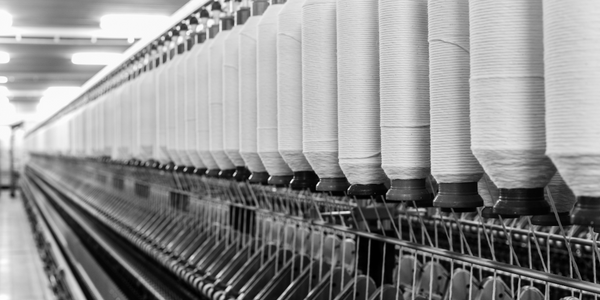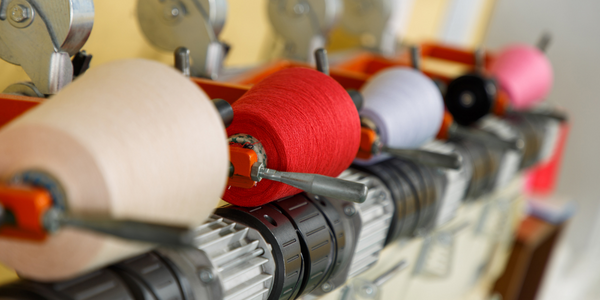技术
- 功能应用 - 库存管理系统
- 功能应用 - 仓库管理系统 (WMS)
适用行业
- 服装
- 金融与保险
适用功能
- 销售与市场营销
- 仓库和库存管理
用例
- 库存管理
- 拣选/分拣/定位
关于客户
Pine Apparel 是一家服装批发商,向美国各地的精品店发货。该公司由迈克尔·爱德华兹 (Michael Edwards) 创立,他最初是通过在车上销售服装开始的。尽管不断增长,该公司仍以小企业的形式运营,库存和会计系统过时。 Pine Apparel 的团队包括销售代表、会计和仓库人员,他们每天都使用集成软件。由于服装行业的独特要求,该公司在管理库存方面面临挑战,需要一种能够提供实时、准确的库存数据的解决方案。
挑战
Pine Apparel 是一家服装批发商,其过时的库存和会计系统与公司的发展不相适应。该公司仍然是一家小型企业,库存记录在 Excel 表格中,流程记录在 Google Drive 中。销售额是人工扣除的,导致团队之间出现抢购情况。当运营总监 Elise Ellis 于 2019 年加入该团队时,她的任务是实现公司现代化。然而,她面临着寻找最适合业务的库存解决方案的挑战。服装行业有独特的要求,例如需要记录捆绑销售的商品和单一库存商品,以及管理同一商品的一系列颜色和尺寸。库存链的任何中断都可能导致销售停止,从而加剧情况的复杂性。
解决方案
Elise 选择 Cin7 而不是其他竞争对手,是因为它能够与 Shopify 合作、其与服装行业特殊要求的无缝功能以及成本效益。 Cin7 提供了 Elise 可以信赖的可靠库存系统。它使她能够实时了解所有系统和平台上可用的内容。该公司于 2020 年 1 月与 Cin7 签署了合同。尽管面临仓库经理辞职和因 COVID-19 大流行而导致销售放缓等挑战,但 Elise 发现,由于入职和支持,向 Cin7 的过渡毫无压力由 Cin7 团队提供。 Pine Apparel 还将 Cin7 与 Xero、Shipstation 和 Shopify 集成,从而提供了整个业务的准确数据。
运营影响
数量效益

Case Study missing?
Start adding your own!
Register with your work email and create a new case study profile for your business.
相关案例.

Case Study
Fire Alarm System and Remote Monitoring Sytem
Fire alarm systems are essential in providing an early warning in the event of fire. They help to save lives and protect property whilst also fulfilling the needs of insurance companies and government departments.Fire alarm systems typically consist of several inter-linked components, such as smoke detectors, heat detector, carbon monoxide, manual call points, sounders, alarm and buzzer. The fire alarm system should give immediate information in order to prevent the fire spread and protect live and property.To get maximum protection a shoe manufacturer in Indonesia opted for a new fire alarm system to monitor 13 production sites spread over 160 hectars. Although the company had an existing fire alarm system, it could not be monitored remotely.It was essential that the new system would be able to be monitored from a central control room. It needed to be able to connect to the existing smoke detector and manual call point. Information should be easily collected and passed on to the Supervisory Control and Data Acquisition (SCADA) system. Furthermore, the system should have several features such as alarm management, auto reporting, being connected to many client computers without additional cost, and run 24/7 without fails. The company also needed a system which could be implemented without changing the architecture of the existing fire alarm system.

Case Study
IoT Applications and Upgrades in Textile Plant
At any given time, the textile company’s manufacturing facility has up to 2,000 textile carts in use. These carts are pushed from room to room, carrying materials or semi-finished products. Previously, a paper with a hand-written description was attached to each cart. This traditional method of processing made product tracking extremely difficult. Additionally, making sure that every cart of materials or semi-finished products went to its correct processing work station was also a problem. Therefore, the company desired an intelligent solution for tracking assets at their factories. They also wanted a solution that would help them collect process data so they could improve their manufacturing efficiency.

Case Study
Retailer Uses RFID Scanner to Improve Efficiency
Patrizia Pepe wished to improve the logistics of their warehouse: accepting incoming goods from their production sites, movement of items throughout
the warehouse, and packaging of goods for distribution to the retail locations. They initially tried to use barcodes for this function. Because barcodes must be individually scanned within a line-of-sight, the acceptance of goods coming into the warehouse was too time consuming. Working with the University of Florence, Patrizia Pepe instituted a five-month pilot project beginning in August of 2009 to test the validity of an RFID solution. The pilot involved tagging of about 60,000 items for the second seasonal collection, and convinced the company to move forward with tagging all items.

Case Study
Real-time In-vehicle Monitoring
The telematic solution provides this vital premium-adjusting information. The solution also helps detect and deter vehicle or trailer theft – as soon as a theft occurs, monitoring personnel can alert the appropriate authorities, providing an exact location.“With more and more insurance companies and major fleet operators interested in monitoring driver behaviour on the grounds of road safety, efficient logistics and costs, the market for this type of device and associated e-business services is growing rapidly within Italy and the rest of Europe,” says Franco.“The insurance companies are especially interested in the pay-per-use and pay-as-you-drive applications while other organisations employ the technology for road user charging.”“One million vehicles in Italy currently carry such devices and forecasts indicate that the European market will increase tenfold by 2014.However, for our technology to work effectively, we needed a highly reliable wireless data network to carry the information between the vehicles and monitoring stations.”

Case Study
Monitoring and Controlling Automatic Mixing and Dispensing Machines
As technology advances, textile manufacturing has been transformed from a labor-intensive to a partially or fully automated industry. Automation is significant in all segments of textile production - from spinning to printing, and textile machinery manufacturers are constantly searching for new technologies and automation processes will increase the productivity of their machines. The color paste mixing and dispensing machine is an essential part of the printing and dyeing process. With the advantage of automatically computerized controls and database management, the system can significantly improve its dispensing precision, working efficiency and production quality as well as reducing material consumption.








